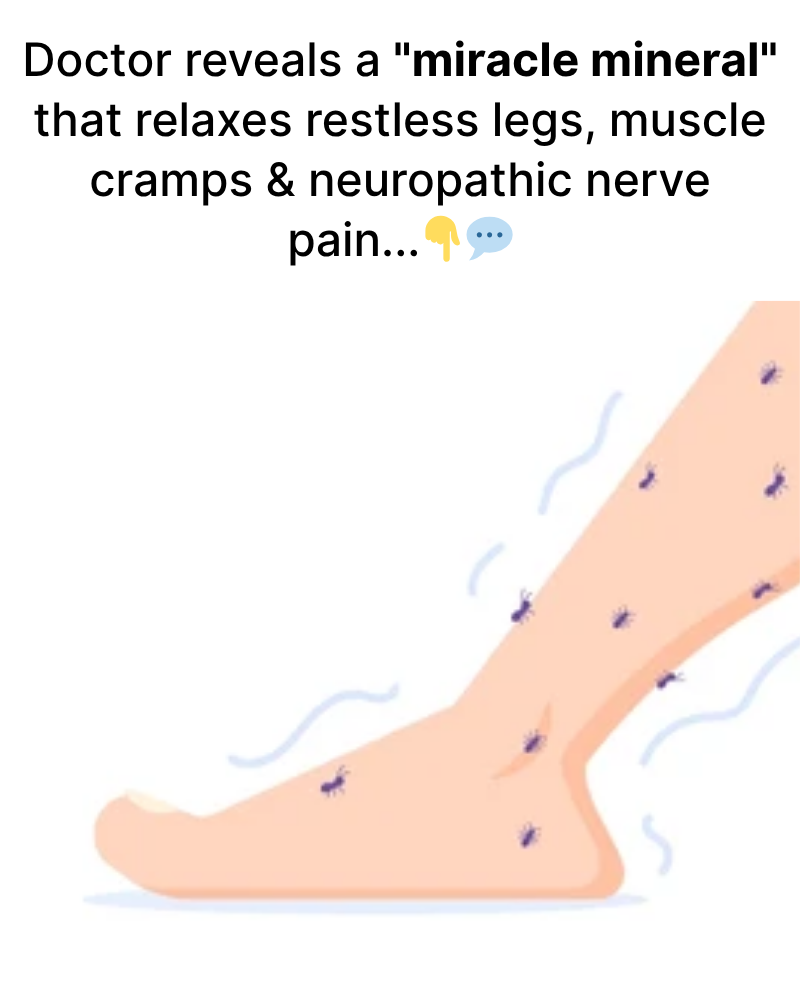
I’m Dr. Chad Walding, a physical therapist who spent over a decade treating seniors in Texas.
Early in my career, I believed nerve damage was irreversible—just something people had to live with. My training suggested that once nerve pain started, it would only worsen over time.
Most conventional treatments offered only limited relief. Patients were left with cabinets full of pills that barely took the edge off and often came with uncomfortable side effects. It was frustrating for them—and for me.
Then, everything changed when I came across a “nutrition first” approach, especially one essential mineral that transformed how I understood and treated nerve pain.

The Hidden Link Between Inflammation and Nerve Pain
Many older adults with nerve pain have tried it all—chiropractic visits, acupuncture, painkillers, heating pads, and more. But most of these only address symptoms and not the root cause.
That root cause? Imbalanced inflammation.
When inflammation flares out of control, it irritates and compresses nerve endings. This sends constant pain signals to the brain—similar to the pressure building up in a kinked garden hose.
Beyond nerve pain, chronic inflammation can disrupt sleep, mood, and even heart health. The good news is that you can fix it—starting with one often-overlooked mineral.

Magnesium: The “Messenger Mineral” Your Body Needs
Magnesium is found in every cell and is essential for over 300 bodily processes. It plays a vital role in:
Energy production
Muscle function and relaxation
DNA repair
Protein synthesis
Regulating the nervous system and neurotransmitters
What makes magnesium especially important is its effect on inflammation. It works like a natural fire extinguisher, reducing inflammatory compounds that trigger pain.
When your body lacks magnesium, it produces more of these compounds—leading to joint pain, muscle soreness, nerve sensitivity, and even mood imbalances. This deficiency is particularly common in adults over 50.

Magnesium and Nerve Pain Relief
Magnesium helps fight nerve pain in several key ways:
Blocks excessive pain signals – it helps calm overactive nerves.
Relaxes tight muscles – easing pressure on surrounding nerves.
Reduces inflammation – minimizing pain and swelling around the nerves.
As a result, many people who increase their magnesium intake report:
Reduced tingling and burning
Fewer sharp pains
Improved sleep
Better comfort during daily activities
In one 2011 study, magnesium supplementation helped reduce sciatic nerve pain and even promoted nerve regeneration. That’s a major breakthrough.

The Heart-Magnesium Connection
Magnesium also supports heart function by:
Maintaining healthy rhythm
Widening blood vessels for smoother blood flow
Supporting blood pressure and muscle strength
With age, heart health becomes more vulnerable, and magnesium needs increase. Many medications further deplete magnesium levels, making supplementation essential.
Why Most Adults Are Deficient
Roughly 70% of U.S. adults don’t get enough magnesium. Aging only makes this worse. Older adults absorb less magnesium from food, and their kidneys excrete more of it. Even magnesium-rich foods aren’t what they used to be, thanks to soil depletion.
Diet alone is no longer enough. That’s why the right supplement is key.

The Takeaway
If you’re over 50 and dealing with nerve pain, inflammation, or muscle cramps, marine magnesium may be the solution you’ve been missing. With its powerful anti-inflammatory effects and essential trace minerals, it’s a comprehensive way to support aging nerves, reduce pain, and reclaim comfort and mobility.